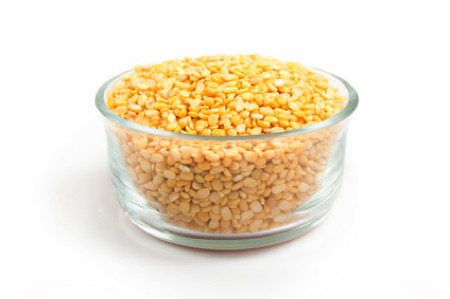By Nadia Marshall
What is Mung Daal?
Mung can also be spelt Moong... but I'll go for the more familiar mung spelling. Mung daal is made from mung beans. There are two different types - split mung with the skins still attached, also known as 'Chilka' and split mung without the skins, also known as yellow mung. You can also eat mung as the whole mung bean... but you need to soak it first. And... you can also get mung flour which is fabulous for making protein-rich, easy to digest, gluten-free breads, patties, puddings, cakes and other yummy things! Most of us in the West are familiar with mung beans sprouted in salads. Other than that, we've probably never even eaten them, unless we've had some exposure to Ayurvedic or Indian cooking. What a tragedy! Let me tell you why....
What are its qualities?
From an Ayurvedic perspective, mung beans have the following qualities...
Rasa: Sweet, Astringent
Virya: Cooling
Vipaka: Sweet
Qualities: Light, Dry
Actions on the doshas: Tridoshic, balances Vata, Pitta and Kapha
Action on the mind: Sattvic
Whole mung beans that have been soaked and then cooked are the most nourishing, the heaviest and therefore also slightly more difficult to digest. They also take the longest to cook - but they have the most prana... because they are still capable of sprouting. Chilka is a little lighter, cooks faster and doesn't need to be soaked but still has a nice nourishing, wholemeal quality. Yellow mung is the lightest of all, the fastest to cook and the easiest to digest. Yellow mung is therefore best for any kind of fasting you may be doing.
What are its medicinal qualities?
It is quite rare to have food that is sweet, cooling and sweet... but also light. Mung has the special quality of being nourishing for the tissues and immune system (due to its sweetness) but also light and easy to digest. It is usually cooked with ghee (or other oil) to antidote its dry and astringent qualities. Mung's sweet quality (both as its taste and post-digestive effect) has a calming, grounding effect on the mind/body but it is also considered Sattvic which means it helps to directly cultivate peace, clarity and contentment in the mind. In Ayurveda, mung is the queen of legumes! It is considered the lightest and easiest to digest, the least gas forming and it is one of only two beans with this Sattvic effect on the mind (the other being red lentils).
The Western viewpoint
From a western perspective, Mung beans are considered an alkaline food. Why? Because they have high quantities of predominantly alkaline minerals - calcium, magnesium, potassium and sodium. They are also rich in Vitamin C. They contain both carbohydrates and proteins as well as dietary fibre. They also have a low GI (glycemic index) of just 31 which means they offers a slow release of energy into the bloodstream due to the slow breakdown of carbohydrates (foods are considered to have a low GI if their value is less than 55, on a scale of 0-100). And.... if cooked with basmati rice or eaten with chappattis, you will have yourself a complete protein with all your essential amino acids....
How do you eat it?
Depending on the type of mung you're using, you can eat it in all manner of ways. The most common is probably as a kitcharee, a daal or a soup. If you get into using mung flour, you might use it for all sorts of things!
Why do I love it?
I eat mung virtually every day.... sometimes for two meals a day! I love it because it sits sooo well in my belly. It fills me up, grounds me but at the same time leaves me feeling light, comfortable and well. I can feel it nourishing my body and mind... I also love it because it is dead easy to cook, cooks quickly and tastes fantastic with just a few spices in the mix. What more could you ask for in a humble bean?! My favourite is the yellow mung... it feels best in my tummy :)
Should anyone avoid eating it?
In a word, no. Anyone and everyone can and should eat mung daal.
Where do you get it from?
The bad news is you won't find mung daal at the supermarket. You'll have to go to your local Indian/Asian grocer or to your local health/wholefoods store and ask for it. If they don't currently stock it, ask them to. There are a few places you can buy Australian mung but most of it is imported from India.
Tell me about your experience with mung... and why you love it! xx
Love
Nadia x




